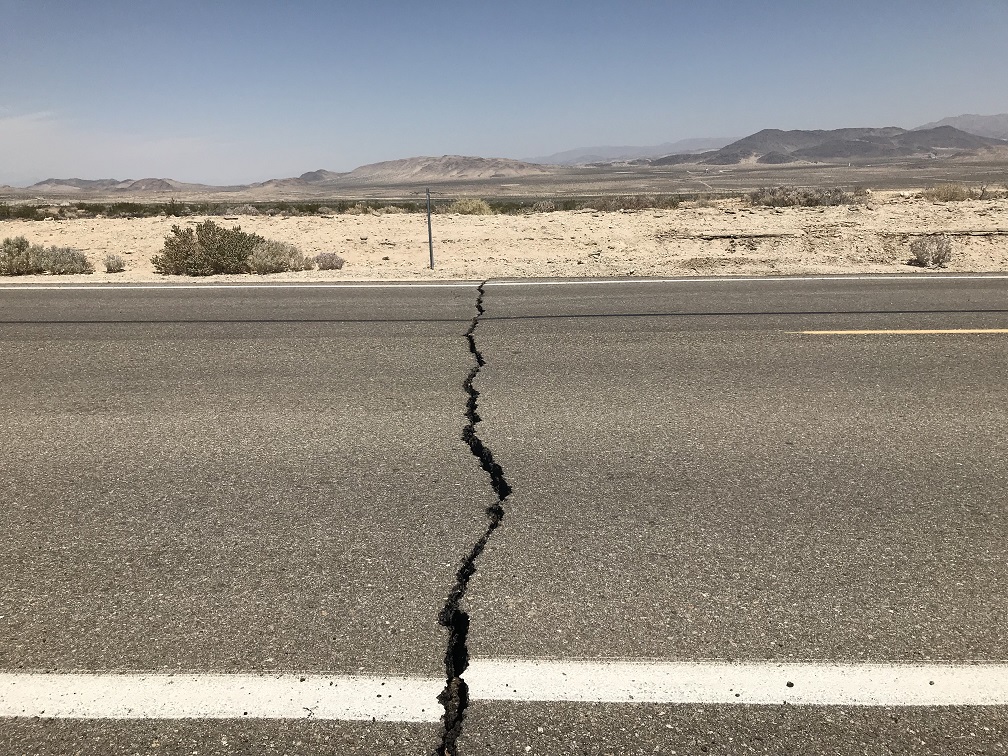For CEA media contact information, visit the Press Releases page.
Ridgecrest earthquakes generate spike in CEA earthquake insurance purchases
(SACRAMENTO) The California Earthquake Authority (CEA) gained 23,861 earthquake insurance policies in July, the second-largest monthly net increase in CEA’s 23-year history. This growth was driven by the magnitude 6.4 and 7.1 earthquakes, and a number of aftershocks, that struck on unnamed faults near the Mojave Desert town of Ridgecrest beginning on the Fourth of July holiday.
The gain in policies seen after what geologists are calling the Searles Valley earthquake sequence is a net gain that takes into account new purchases and policies renewed during July, less any canceled policies during the month. For comparison, CEA gained a total of 6,289 policies for the first six months of 2019 combined. The July numbers brought CEA’s total policy count to 1,080,986 as of July 31. CEA’s largest monthly gain on record was in September 2017, following hurricanes in the southeastern U.S. and the Caribbean, earthquakes in Mexico and wildfires in California, when CEA had an increase of nearly 26,000 policies.
“Large, damaging earthquakes like the ones that recently struck Ridgecrest don’t happen very often,” said CEA CEO Glenn Pomeroy. “But when they do, they’re a powerful reminder that earthquakes can happen at any time, anywhere in California, and that we need to get better prepared to recover. If the Ridgecrest earthquakes had occurred under a more densely populated area, such as Los Angeles, the outcome could have been a lot worse for California.”
It’s too soon to know the total damage caused by the Ridgecrest earthquakes, but CEA has about 2,000 policyholders in the area who likely experienced strong to severe shaking.
Quickly after the earthquakes, CEA placed a team at the local assistance center in Ridgecrest to provide information and encourage affected policyholders to contact their residential insurance companies—which sell and service CEA policies—to file a claim for covered damage. As of Aug. 26, CEA had received reports of 462 damage claims from its participating residential insurance companies.
“We observed some damage in Ridgecrest and Trona—cracked walls, damage to mobilehomes, fallen chimneys and some fire damage—but not as much as we might expect for earthquakes of these magnitudes, one of which was the strongest earthquake in California in 20 years,” said CEA Chief Mitigation Officer Janiele Maffei. “Certainly, the residents who were most affected will be recovering for some time, but it was fortunate that many of the homes in the Ridgecrest area were newer, not on raised foundations, and not as likely to suffer the type of damage that older, unretrofitted houses might.”
For more information about the Ridgecrest earthquakes, earthquake insurance available through CEA, how to identify and reduce structural risks, and tips on how to prepare to survive and recover from California’s next damaging earthquake, visit EarthquakeAuthority.com.
About CEA
The California Earthquake Authority (CEA) is a not-for-profit, privately funded, publicly managed organization that provides residential earthquake insurance and encourages Californians to reduce their risk of earthquake loss. Learn more at EarthquakeAuthority.com.
Ridgecrest earthquake image
Ground movement caused a crack and offset the painted lines on Highway 178 near Ridgecrest.
For a higher-resolution version of this image, please contact Sarah Sol at ssol@calquake.com. For b-roll taken in Ridgecrest, please contact Pamela Diaz at pdiaz@calquake.com.

